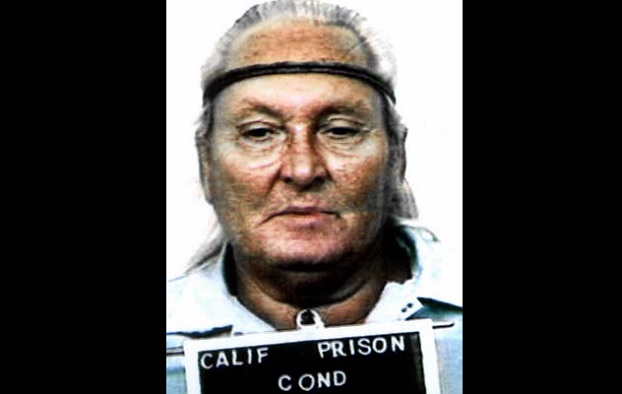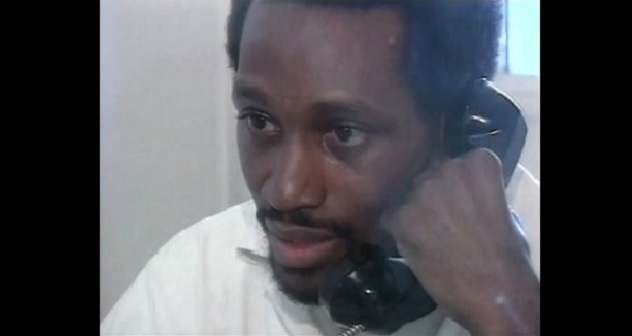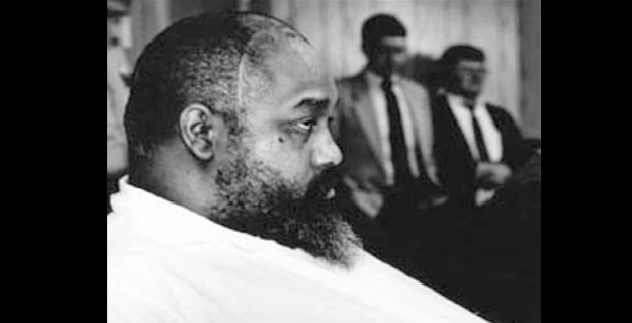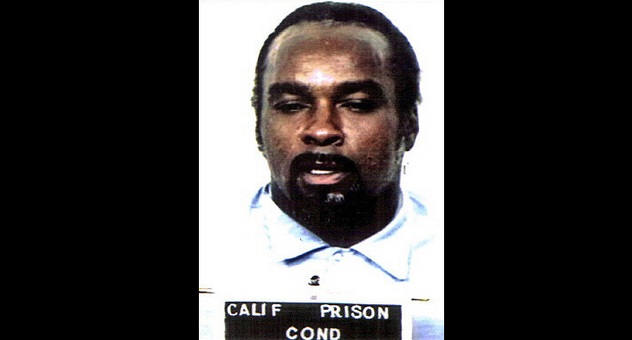 Mysteries
Mysteries  Mysteries
Mysteries  History
History 10 Surprising Stories About the Texas Rangers
 Humans
Humans 10 Philosophers Who Were Driven Mad by Their Own Theories
 Miscellaneous
Miscellaneous 10 Video-Game-Worthy Weapons and Armors from History
 Weird Stuff
Weird Stuff 10 Psychics Who Accurately Predicted Wartime Events
 The Arts
The Arts 10 Pieces of Art Inspired by a Broken Heart
 Health
Health 10 Science Fiction-Sounding New Medical Treatments
 History
History 10 Surprising Facts About the Father of Submarine Warfare
 Space
Space Ten Astonishing New Insights into Alien Worlds
 Weird Stuff
Weird Stuff 10 Bizarre Summer Solstice Rituals Still Practiced Today
 Mysteries
Mysteries Top 10 Haunting Facts About the Ghost Ship MV Alta
 History
History 10 Surprising Stories About the Texas Rangers
 Humans
Humans 10 Philosophers Who Were Driven Mad by Their Own Theories
Who's Behind Listverse?

Jamie Frater
Head Editor
Jamie founded Listverse due to an insatiable desire to share fascinating, obscure, and bizarre facts. He has been a guest speaker on numerous national radio and television stations and is a five time published author.
More About Us Miscellaneous
Miscellaneous 10 Video-Game-Worthy Weapons and Armors from History
 Weird Stuff
Weird Stuff 10 Psychics Who Accurately Predicted Wartime Events
 The Arts
The Arts 10 Pieces of Art Inspired by a Broken Heart
 Health
Health 10 Science Fiction-Sounding New Medical Treatments
 History
History 10 Surprising Facts About the Father of Submarine Warfare
 Space
Space Ten Astonishing New Insights into Alien Worlds
 Weird Stuff
Weird Stuff 10 Bizarre Summer Solstice Rituals Still Practiced Today
10 Controversial American Executions
One of the arguments used in support of the death penalty is that capital punishment serves justice. When a person kills another person, they should receive the same treatment. It is an eye for an eye. This is an easy concept to understand, especially when it comes to people who are clearly evil, like serial killers and child murderers.
But crimes—even murder—and the people who commit them aren’t always black and white. Usually, they exist in shades of gray. So in the 10 cases presented in this list, we’re asking one simple question: Was justice served?
10 John Ferguson
John Ferguson’s mental health problems were first recorded in 1965 while he was in prison. He reported having visual hallucinations, and by 1971, he was diagnosed with severe schizophrenia. It was recommended that he be committed to a state hospital. By 1975, two doctors labeled him dangerous, even homicidal, and declared that he shouldn’t be released from the hospital. But for some reason, he was set free.
On July 27, 1977, Ferguson disguised himself as a utility man and tricked his way into a home in Carol City, Florida. Once inside, he took a woman hostage and allowed two accomplices into the house. When seven men arrived at the door, the trio of home invaders took them hostage as well. After robbing the place, the woman and all seven men were shot in the back of the head with a shotgun. Only the woman and one man survived. At the time, it was the worst mass murder in the history of Miami-Dade.
Then in January 1978, Ferguson disguised himself as a police officer and confronted two 17-year-olds, Brian Glenfeldt and Belinda Worley. He shot Glenfeldt in the back of the head, and then he took Worley to a wooded area where he raped and murdered her.
Ferguson was convicted of all eight murders and sentenced to death. He was also the main suspect in the 1977 robbery and murder of an elderly couple in a Miami motel room. But his appeal lawyers argued that since Ferguson had a long history of mental illness and didn’t know the difference between right and wrong, he shouldn’t be subject to the death penalty. After all, Ferguson claimed that he was a “prince of God,” and after he was executed, he would rise up with Jesus to save America from a communist plot.
Despite clearly being mentally ill, Ferguson was executed on August 5, 2013 . . . after spending 35 years on death row.
9 Clarence Ray Allen

Born in 1930, Clarence Ray Allen started picking cotton when he was around 12 years old. By the time he was 38, he’d started his own security firm. Allen became quite wealthy and owned his own plane and horse ranch in California. At first glance, he appeared to be a happy family man, but little did anyone know that Allen was really a notorious criminal.
Between 1974 and 1977, Allen was involved with at least eight armed robberies of homes and businesses in California’s Central Valley. In the first robbery, Allen and four accomplices broke into Fran’s Market, a grocery store owned by his friends, Ray and Frances Schletewitz. Afterward, one of the accomplices, 17-year-old Mary Sue Kitts, spilled the beans. She told Roy and Frances’s son, Bryon, that Allen was responsible for the robbery.
Infuriated, Allen ordered Lee Furrow, another accomplice, to kill Kitts or else. So Furrow strangled Kitts and dumped her body into a canal. Her corpse was never recovered.
Allen was arrested in 1977 after a violent robbery at a Kmart went wrong. After his arrest, he was linked to the murder of Kitts and sentenced to life. Furrow, who actually performed the killing, pleaded guilty to second-degree murder.
In prison, a 50-year-old Allen befriended Billy Ray Hamilton, a con who was about to be paroled. Wanting revenge, Allen asked Hamilton to kill the eight witnesses who’d testified against him. On September 5, 1980, Hamilton and his girlfriend, Connie Barbo, went to Fran’s Market, the first store Allen had robbed. With a sawed-off shotgun, Hamilton and Barbo murdered 27-year-old Bryon Schletewitz, along with 17-year-old Josephine Rocha and 18-year-old Douglas White.
However, a witness was hiding in the washroom, and he later identified Hamilton and Barbo as the shooters. Barbo was given a life sentence, and both Allen and Hamilton were sentenced to death. For the next 23 years, Allen sat on death row and watched as three execution dates passed him by. As he got older, his health deteriorated substantially. He was hard of hearing, could no longer walk, and was confined to a wheelchair. And thanks to advanced diabetes, Allen was also legally blind.
On September 2, 2005, Allen suffered a heart attack but survived. Allen’s lawyers argued that executing an old man in poor health constituted cruel and unusual punishment. The court didn’t agree, and despite his frail health, Allen was executed via lethal injection on January 17, 2006. It was the day after his 76th birthday.
8 Gary Graham

On May 13, 1981, 53-year-old hustler and con artist Bobby Grant Lambert was buying groceries at a Safeway in Houston, Texas. In the parking lot, Lambert was approached by a young black man wearing a white jacket. Suddenly, the man shot Lambert in the chest with a .22-caliber handgun. When paramedics arrived, Lambert was pronounced dead at the scene. Police believed it was a robbery gone wrong.
There wasn’t much progress on the case until a 17-year-old Gary Graham was arrested. When Lambert was murdered, Graham was on a drug-fueled crime spree. The day after Lambert was killed, Graham stole a van and later pistol-whipped, shot, and robbed another victim in a parking lot. On May 18, Graham struck again, robbing a couple in yet another parking lot. Graham stuck his gun in the man’s mouth before stealing the woman’s wedding ring and fondling her breasts. Later that night, Graham stole another car.
Graham was finally arrested after raping a 57-year-old woman. Altogether, police believed he was responsible for 18 armed robberies, one rape, and an additional shooting. Since some of his crimes shared similarities to Lambert’s murder, authorities put Graham in a lineup. There were six witnesses to Lambert’s killing, but only one picked Graham out of a lineup. Based on that identification (along with his other crimes), Graham was sentenced to death on October 28, 1981.
As Graham sat on death row, his lawyers appealed the case. Witnesses swore that Graham was in a different part of the city when Lambert was killed. And the people who’d witnessed the murder stated the shooter was shorter than Graham. As his appeals went on, Graham picked up support from the likes of Jesse Jackson, Al Sharpton, Danny Glover, and Kenny Rogers.
Graham’s proponents said he was convicted because he was black. Also, even if Graham did commit the crime, he was a juvenile at the time of the shooting. Critics also thought it was unfair to execute Graham because death is irreversible, and there was so much doubt surrounding the conviction. Graham had been convicted of 10 armed robberies and rape. He was going to live the rest of his life in prison for crimes he did commit. So why execute him for a crime with so many questions surrounding it?
Graham, who changed his name to Shaka Sankofa, was given three stays of execution, but by 2000, he’d run out of appeals. Texas governor George W. Bush, who was running for president at the time, did not grant another stay. On June 22, 2000, after last-minute appeals by his lawyers had failed, Graham was led to the death chamber. He struggled and fought on the way, only to be subdued and carried to the bed. Graham’s last words were an angry rant about how his death was murder by the state and that it was part of a genocide of black men. He also claimed that his death would be avenged.
At 8:49 PM, he was pronounced dead.
7 Richard Masterson
On January 26, 2001, Richard Masterson met Darin Honeycutt, a transvestite who went by the name of Brandi Houston, at a bar in Houston, Texas. They went back to Honeycutt’s apartment, and according to Masterson, Honeycutt asked Masterson to put him in a “sleeper hold” so he could experience autoerotic asphyxiation. Afterward, Honeycutt fell to the floor. Masterson thought Honeycutt was unconscious, but when he didn’t wake up, Masterson realized Honeycutt was dead.
Masterson said he was worried no one would believe the death was accidental due to his violent criminal record. Desperate, Masterson allegedly trashed Honeycutt’s apartment to make it look like a robbery gone wrong. He then tried to flee Texas, but he was arrested in Florida.
At trial, the police said Masterson killed Honeycutt in order to steal his car. The evidence used to support this theory was Masterson’s history of violence. In Tampa, Masterson had choked a man until he lost consciousness and had then stolen his wallet and vehicle. Medical examiner Paul Shrode also testified that Honeycutt could only have died from asphyxiation. However, the defense had another pathologist look at the autopsy, and this expert determined that Honeycutt could’ve died from a heart attack due to coronary artery disease.
While waiting on death row, Masterson wrote a letter to the attorney general of Texas, saying Honeycutt’s death was no accident. He even asked to be executed. However, Masterson’s lawyers argued he was trying to commit “suicide by confession.” And when Masterson was on anti-depressants, he would change his mind about wanting to die.
It should be noted that in the ensuing years, medical examiner Paul Shrode came under suspicion when it was discovered that he’d lied on his CV. Shrode was fired in 2011, but an inquiry did show that he was qualified for his job at the time. Also, a year before Honeycutt’s autopsy, Shrode had been demoted for misdiagnosing a drug overdose as a cause of death.
Nevertheless, Masterson was executed on January 20, 2016. The 43-year-old was pronounced dead at 6:53 PM, despite no concrete evidence that a murder was committed.
6 Napoleon Beazley
In April 1994, Napoleon Beazley was a 17-year-old from Grapeland, Texas, with a very promising future. He was an honor student, a star athlete, president of his senior class, and the runner-up for Mr. Grapeland High School. He also planned on attending Stanford Law School. But Beazley had a dark side. He dabbled in drug dealing and occasionally carried a handgun.
On April 19, Beazley was out with two friends, Cedrick and Donald Coleman. They were looking for someone to carjack, and eventually, they spotted John and Bobbie Lutting. After the couple pulled into their garage, Beazley and the Coleman brothers followed them inside. That’s when Napoleon fired his gun, grazing John’s head. He then fired a second shot at Bobbie, barely missing. Then he shot John in the head, killing the 63-year-old. Bobbie survived the incident by pretending to be dead.
Three weeks later, an anonymous tip led to the trio’s arrest. Cedrick and Donald testified against Beazley, and they were given life sentences. Beazley, who was 17, was sentenced to death.
There was no doubt that Beazley committed the murder, but it raised a lot of questions regarding whether minors should be subject to capital punishment. There were also some external factors relating to the case. For example, Beazley was poor and black, while his victim was a wealthy white man shot inside his own home. Also, John’s son was a highly respected federal judge, and the Honorable J. Michael Luttig wanted the full extent of the law extended to his father’s killer.
When the case went to the Supreme Court, three of the justices—David Souter, Antonin Scalia, and Clarence Thomas—had to recuse themselves because they had personal ties to Judge Luttig. This resulted in a deadlock, which meant the execution was to proceed as planned.
On May 28, 2002, Beazley was pronounced dead at 6:17 PM. He was 25 years old and had no last words, but before he died, Beazley wrote that his crimes were the senseless actions of a teenager. He also wrote that, in some cases, the death penalty is warranted, but he didn’t feel he deserved to die.
5 Ricky Ray Rector

On the night of March 22, 1981, Ricky Ray Rector got into a fight over a $3 cover charge at a dance club in Conway, Arkansas. During the confrontation, Rector murdered a man named Arthur Criswell. Rector told the police that he’d turn himself in to Bob Martin, a police officer Rector knew.
On March 24, Martin went to meet Rector, and that’s when Rector shot the officer in the head. He then ran out of the house and shot himself in the temple. Martin was killed, but Rector survived, albeit with severe brain damage. Doctors were forced to remove a part of his brain, effectively lobotomizing him. The operation left Rector with an IQ somewhere between 60 and 70. Regardless, Rector was found guilty and sentenced to death. His execution was set for January 25, 1992.
Rector’s lawyers argued that since he was mentally disabled, Rector shouldn’t be executed. The decision ultimately came down to the governor of Arkansas, Bill Clinton. At the time, Clinton was running for leadership of the Democratic party, and Rector’s death was just before the Iowa caucus and the New Hampshire primary. Hoping to show he was tough on crime, Clinton flew back to Arkansas to ensure the execution went through. This led people to believe Rector’s execution was more about politics than justice.
Rector’s last meal was steak, fried chicken, cherry Kool-Aid, and pecan pie. Reflecting Rector’s mental capacity, he didn’t finish the pie because he was “saving it for later.” The execution itself took 50 minutes because officials were unable to find a vein. Rector, who was 42, was pronounced dead at 10:09 PM.
4 Kelly Gissendaner
Doug and Kelly Gissendaner of Atlanta, Georgia, had a rather complicated relationship. The couple had three children together, divorced in 1993, and remarried in 1995. But by 1997, Kelly was having an affair with a man named Greg Owen.
Wanting to permanently end their relationship, Kelly went out with her friends on February 7, 1997. Meanwhile, Owen waited at the family’s house for Doug to get home. When he did, Owen pulled a knife, forced Doug into his car, and drove out to a wooded area. Owen got Doug on his knees and then stabbed him in the chest and neck, killing him. Afterward, Owen texted Kelly a code that indicated the job was done and that she could come pick him up.
Kelly reported her husband missing, and after Doug’s body was found, Kelly and Owen were interviewed by police. Both confessed. Owen, who committed the actual murder, testified against Kelly, and he was given a life sentence. Kelly, on the other hand, was sentenced to death.
After being sentenced, Kelly studied theology and started her own one-woman ministry on death row. She’s credited with helping many prisoners who were on the brink of suicide and even rehabilitating lives. She also became pen pals with Jurgen Moltmann, a respected German theologian. He even visited her in prison after she graduated from her theology class in 2011.
The good work that Kelly performed while behind bars prompted people to ask Georgia’s governor to commute Kelly’s sentence to life in prison. After all, the desire to execute evil and dangerous people is understandable, but Kelly had taken responsibility for her actions and turned her life around. She’d even helped others and wasn’t considered dangerous. Around 90,000 people signed a petition, and even Pope Francis sent a letter in support of commuting Kelly’s sentence. However, none of this would save her life.
Kelly’s execution was put off twice. On February 2015, a snowstorm forced officials to postpone. It was rescheduled to take place a few days later, but just before the execution, the drugs that were to be used looked cloudy. So Kelly’s execution was postponed again until September 2015.
On the night of Kelly’s planned execution, her children tried to speak to the Georgia Board of Pardons and Paroles, in hopes of getting a stay of execution. Sadly, their appeal was denied. Shortly after midnight, the 47-year-old mother of three was strapped to the bed in the death chamber. She sang “Amazing Grace” and prayed before she was given the injection. Kelly Gissendaner died at 12:21 AM on September 30. She was the first woman in 70 years to be executed by the state of Georgia.
3 Stanley Tookie Williams

Stanley Tookie Williams was born on December 29, 1953. His mom was a poor, single 17-year-old in New Orleans. As a child, Williams moved to Los Angeles. Growing up, his mother was never around, and Williams idolized the pimps and drug dealers who worked in his neighborhood. His first job as a young teenager was caring for dogs after they’d been used in dogfights. His next job was as a boxer who fought other young boys.
In 1969, Williams and his friend, Raymond Washington, started the Los Angeles–based gang known as the Crips. By 1979, the gang had divided into two groups: Eastside and Westside Crips. The gang also expanded stateside, and by this point, Williams and Washington had lost control of their organization.
In 1979, Washington was shot and killed. His murder remains unsolved. Also in 1979, Williams and three other Crips were robbing a convenience store while high on PCP, and Williams ended up murdering a 26-year-old clerk. On March 11, 1979, Williams supposedly broke into a motel office and murdered three members of the family who owned and operated the motel. A shell left at the scene linked Williams to the crime.
The man was charged with four murders, although he claimed he was innocent. At his trial, witnesses claimed Williams talked about the murders after they were committed. Apparently, he said, “You should have heard the way he sounded when I shot him.” Then Williams made a growling sound and laughed for about five minutes afterward. Williams was ultimately sentenced to death.
When Williams went to death row, he was a disruptive prisoner. That’s a terrifying thought because Williams was a huge man. He weighed 136 kilograms (300 lb) and had 59-centimeter (22 in) biceps. Sitting in solitary confinement, however, Williams underwent a dramatic reformation. He read the Bible, philosophy books, and books on black history. When he was released from solitary, he was a self-proclaimed man of peace.
With the help of a friend, Williams published a series of children’s books, stories that warned kids of the dangers of gang life. He was responsible for brokering truces between gangs in California and New Jersey. Williams was even nominated for the Nobel Peace Prize five times and nominated once for the Nobel Prize in Literature.
Due to his turnaround and good work, Williams had many supporters asking for his sentence to be commuted to life in prison. Some of his more notable supporters were Archbishop Desmond Tutu, Snoop Dogg, Joan Baez, and Jamie Foxx. The actor even played Williams in a made-for-TV movie in 2004.
As Williams’s execution date approached in late 2005, Gov. Arnold Schwarzenegger met with Williams himself, but he decided against commuting the sentence. He wasn’t sure if the turnaround was genuine or not. As a result, on December 13, 2005, after spending 24 years on death row, 51-year-old Stanley Tookie Williams was executed. He was pronounced dead at 12:35 AM, although he never wavered in his stance that he was innocent of all four murders.
2 Lester Bower
In the fall of 1983, Lester Bower had a good job as a chemical salesman. He was a former college football player, a family man, and lived in a nice house in Fort Worth, Texas. And he never had a problem with the law.
According to Bower, he’d responded to a magazine ad to purchase an ultralight plane from a hangar near Sherman, Texas. Bower told his wife that he was bow hunting because she wouldn’t have approved of him buying the plane. After paying $3,000, he stashed the plane at a gun range and returned home that night.
On the same day Bower bought the plane, four men were shot to death at the hangar, execution style. Three were wrapped in rugs, and the fourth was dead near a doorway. One was a sheriff’s deputy, and another was a former police officer. In the ensuing months, Bower didn’t say anything about being at the hangar that day because he was worried that the person (or people) responsible would come after him. Eventually, police traced phone calls from the hangar to Bower, and since he’d lied to his wife about his whereabouts that day, the cops turned their focus to the father of two with no criminal record.
Bower was tried despite the fact that there was no physical evidence tying him to the massacre. Plus, the murder weapon was never found. Police said the motivation behind the killings was that Bower stole the plane and murdered everyone to cover it up. At the trial, on his lawyer’s advice, Bower didn’t testify. After two hours of deliberation, the Texan was sentenced to death.
Over the next three decades, Bower appealed, and multiple witnesses said he didn’t commit the murders. According to witnesses, the killings were drug related, which was one of the original theories the police had considered until Bower popped up on their radar. Supposedly, four men named Lynn, Ches, Rocky, and Bear were responsible for the crime. At an appeals trial, four witnesses testified that Bear was really Brett Leckie, a man who’d died a few years prior from cancer. Leckie and some accomplices were allegedly looking for cocaine when they were surprised by the four men, thus sparking the massacre.
However, there was no physical evidence tying Leckie—or anyone else—to the murders. Eventually, the judge admitted that the new evidence presented could’ve resulted in a different verdict at Bower’s original trial. However, it didn’t prove that Bower was innocent. Sadly, this is a glaring problem with the American justice system. While reasonable doubt can help someone at trial, it’s not enough to win an appeal. Only definitive evidence, such as DNA tests, are enough to save someone from a wrongful conviction.
In his final appeal to the Supreme Court, Bower argued that he was 67, the oldest person on Texas’s death row, and he’d spent 32 years waiting to be executed. This was cruel and unusual punishment. But his appeal was denied, and hours later on June 3, 2015, Texas executed their oldest inmate since the death penalty was reinstated in 1976. Bower was pronounced dead at 6:36 PM.
1 Barry Lee Fairchild

In February 1983, Marjorie Mason, a 22-year-old Navy nurse, was kidnapped, raped, and shot to death. After the brutal murder, two black men were spotted driving her car. When police tried to pull them over, the suspects fled. As they ran, one man left behind a hat that reminded an officer of one worn by his informant, Barry Lee Fairchild.
On the night of March 4, Fairchild was located, and the house where he was staying was surrounded by at least 50 officers. He was unarmed and tried to flee, so he was brought down by a police dog. The animal attacked him on the head and neck. After the arrest, Fairchild was taken to the hospital where he received stitches. He was then taken to the police station at about 2:30 AM. Throughout the night, three white lawmen interrogated Fairchild, a black man with an IQ of about 62. Even worse, Fairchild didn’t have a lawyer.
In the videotaped interrogation, Fairchild seemed to respond to voices that weren’t physically there. During the night, he confessed twice to kidnapping and raping Mason. However, he claimed that the second suspect was the one who shot her. He also took police to the crime scene and told them what happened. Fairchild went to trial, and solely on the weight of his confession, he was found guilty and sentenced to death.
In his appeals, a number of problems were raised with the conviction (besides his intelligence level and the lack of physical evidence). The person Fairchild named as the shooter wasn’t even in the state at the time of the murder. Also, Fairchild’s lawyer argued that police got physical during the interrogation. The attorney said the cops put a phone book on Fairchild’s head and then hit it with a blackjack. This would allow the officers to hurt Fairchild without leaving a bruise. The police denied these accusations, but Fairchild’s lawyers found 11 men who were beaten in the same way.
Finally, while Fairchild did confess twice, those two confessions contradicted each other.
At a clemency hearing—an appeal to literally save his life—Fairchild actually fell asleep. He would lose that appeal, and on August 31, 1995, Barry Lee Fairchild was executed via lethal injection.
Robert Grimminck is a Canadian freelance writer. You can friend him on Facebook, follow him on Twitter or Pinterest, or visit his website.








